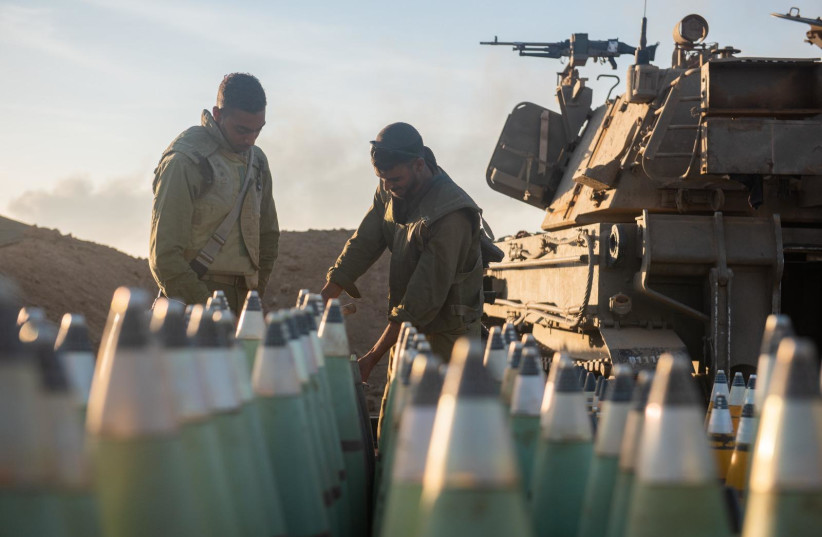Combined stages of Gaza war to take several months; thousands of Hamas terrorists killed
The combined stages of the current invasion and expected later stages of insurgency, lower-grade fighting will take several months, The Jerusalem Post has learned.
While to date, the IDF and top political officials have talked about an invasion lasting more than weeks, and other processes lasting a couple of months or more, the impression now is that it will be longer.
This will probably not mean several months of intense fighting like now, but rather a combination of strategies, followed by months of fighting an insurgency after the initial stage.
There may also not be any one marker day for an end to the fighting, as Hamas is not expected to surrender at any point, but rather, the expectation is that just as over the past week ground forces escalated their fighting, at some later point, that scale of fighting will be gradually reduced.
Beyond several months, it is hard for the IDF to predict, given that insurgencies in Iraq, Syria, and Afghanistan lasted years, the estimate right now is several months.

Unclear how many are hiding in tunnels
This is probably due to the methodical pace of IDF forces, which are mostly still based in northern Gaza, and Hamas’s avoidance of too many large-scale battles, as they wait patiently to spring ambushes.
Thousands of Hamas terrorists have been killed by the IDF, some 1,500 during the first few days. Some tens of thousands of Hamas and Islamic Jihad forces remain in Gaza.
It is unclear how many are still in the North hiding in tunnels, hospitals, mosques, and other civilian locations, and how many have been evacuated to the South, with over one million Palestinians from Gaza City alone.
But the number who have left, now over one million, has helped give the IDF a freer hand to act.
The military has used six different methods to encourage evacuation, including: phone calls, text messages, fliers, social media, public media calls, and occasionally “roof knocking,” which includes the firing of a missile to bang loudly on a roof – without exploding – to scare and motivate civilians to evacuate, after earlier warnings are ignored.
The IDF and political officials have said there is less roof-knocking in this war, simply because it intends the complete elimination of Hamas, so the surprise factor is critical.
Morale is high, despite losses
IDF soldiers’ morale is considered very high and even more impressive than many commanders and Israeli society had expected from the younger generation. Some of that motivation is also highly personal.
The IDF has acknowledged that it is taking some heavy hits, including ambushes against an armored personnel carrier and a tank, but this is expected in urban war and that generally, the losses have been low given the challenging urban invasion setting. Hamas has fired hundreds of anti-tank missiles at IDF forces, mostly without success.
The military is conscious of the multi-front nature of the conflict. It believes that hitting Hamas with unprecedented power in the South will restore deterrence in the North against the threat of Hezbollah, but it is also ready if Hezbollah decides to escalate.
US support has been critical, by restocking weaponry, in projecting power to other regional adversaries, and in offering useful advice for fighting in urban settings, but the IDF rejects any claims that American military personnel do anything more than give advice, which it can choose to accept or reject.





Comments are closed.